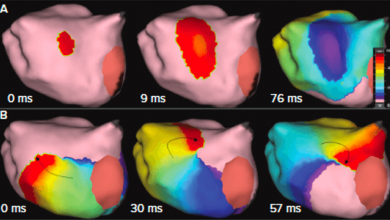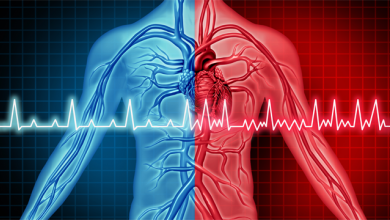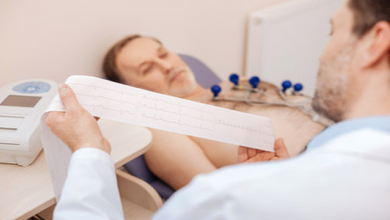Search results
Author(s):
Michael Timothy Brian Pope
,
Timothy Rider Betts
Added:
1 year ago
Author(s):
Andrew Grace
,
Hugh Calkins
,
Ken Ellenbogen
,
et al
Added:
3 years ago
Guidelines and Consensus Statements
1. Brugada J, Katritsis DG, Arbelo E, et al. 2019 ESC guidelines for the management of patients with supraventricular tachycardia. The Task Force for the management of patients with supraventricular tachycardia of the European Society of Cardiology (ESC). Eur Heart J 2020;41:655–720. https://doi.org/10.1093/eurheartj/ehz467; PMID:31504425.
2.Cronin EM, Bogun…
View more
Author(s):
Junaid Zaman
,
Andrew Grace
,
Sanjiv M Narayan
Added:
1 year ago
Author(s):
Venkatesh Ravi
,
Jeffrey Winterfield
,
Jackson J Liang
,
et al
Added:
1 year ago
Author(s):
Caroline H Roney
,
Andrew L Wit
,
Nicholas S Peters
Added:
3 years ago
Determining optimal treatment strategies for complex arrhythmogenesis in AF is confounded by the lack of consensus on the mechanisms causing AF. Fundamental to defining arrhythmogenic mechanisms of AF are the distinctions and interplay between functional features (determined by the electrophysiology of a cell) and structural features (determined by whether a structural or anatomical feature is…
View more
Author(s):
Benedict Wiles
,
Anthony C Li
,
Michael C Waight
,
et al
Added:
1 year ago
Ventricular Tachycardia Isthmus
Author(s):
Ruairidh Martin
,
Meleze Hocini
,
Michel Haissaguerre
,
et al
Added:
3 years ago
Article
Author(s):
Neil T Srinivasan
Added:
3 years ago
Dr Neil Srinivasan (Essex Cardiothoracic Centre, Basildon, UK) evaluates of the role of dynamic substrate changes in facilitating conduction delay and re-entry in ventricular tachycardia (VT) circuits.
Recorded remotely from Basildon, 2020.
View more
Author(s):
Moinuddin Choudhury
,
Mark R Boyett
,
Gwilym M Morris
Added:
3 years ago
The sinoatrial or sinus node (SAN) is the heart’s natural pacemaker. Located in the superior right atrium, it automatically produces cyclical electrical activity to initiate each heartbeat in normal sinus rhythm. SAN dysfunction (SND) in humans, also known as ‘sick sinus syndrome’, can manifest as pathological bradycardia and asystolic pauses. As a result, SND can lead to symptoms of reduced…
View more
Author(s):
Nikolaos Papageorgiou
,
Neil T Srinivasan
Added:
3 years ago

















